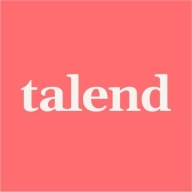

Talend Data Integration and Fivetran both operate in the data integration sector, each with its standout features. Fivetran generally has the upper edge due to its automated functions and comprehensive feature set, appealing to users prioritizing functionality.
Features: Talend Data Integration is recognized for its custom coding options, extensive workflow capabilities, and robust code generation that maximizes efficiency and reliability. Fivetran distinguishes itself with its automation in pipeline management, efficient real-time syncing capabilities, and integration with the dbt tool to transform raw data seamlessly.
Room for Improvement: Talend Data Integration could benefit from simplifying its deployment process and reducing initial costs. Its interface might be enhanced for usability. Fivetran, while user-friendly, could improve in providing richer customer support services and offering more flexibility in pricing structures. It also might expand its real-time syncing to additional platforms.
Ease of Deployment and Customer Service: Talend Data Integration often involves a longer deployment time due to its comprehensive functionalities but offers strong customer support. Fivetran is notable for its rapid automated deployment process, though its customer service does not match the depth provided by Talend.
Pricing and ROI: Talend Data Integration tends to have higher initial setup costs but offers considerable long-term ROI due to its customizable features. Fivetran's pricing model is simpler with potentially lower initial costs, attracting businesses that require straightforward budgeting and quick ROI through efficient data management processes.
It saves us the effort of having one to two data engineers managing the tasks that Fivetran handles.
It has helped us save a lot of time by automating repetitive data processes and reducing manual interventions.
They didn't want to use separate ETL tools for MDM or for TMC and data preparation, which is all included in one package.
If they could provide support more quickly, that would be great.
The technical support provided by Fivetran has generally been good, with a response time and competence that I would rate as good.
The support team is responsive when we raise issues, and they usually provide clear guidance or solutions.
The customer support for Talend Data Integration is very good; whenever I raise a ticket in the customer portal, I immediately receive an email, and follow-up communication is prompt.
By using features like job parallelization and modular design, we can expand our data flows without having to rebuild everything.
The scalability of Talend Data Integration is good; if it weren't scalable, it wouldn't be reliable.
They have 99.9% accuracy on the data load and they maintain transparency.
During the duration of the time that we used Fivetran, it was highly stable.
Once the jobs are properly designed and deployed, they run reliably without major issues.
From a cost perspective, if the number of connectors is lesser, then Fivetran is not the most cost-efficient option.
Fivetran could improve by adapting more for technical users and by providing more options for such users.
If Fivetran can build in more transformations, that would be really helpful in my opinion.
It would be great to have more ready-to-use connectors for modern cloud and SaaS platforms.
Talend Data Integration can be improved by reducing the license cost, as it is a bit high compared to other tools, which can be a burden for small-scale companies wanting to buy a license.
Regarding ETL, Talend Data Integration is great, but concerning real-time data processing, people are not really sure about Talend Data Integration or might not know how it provides such types of flexibilities.
Our current yearly contract for Fivetran is approximately $70,000.
My experience with Talend Data Integration's pricing, setup cost, and licensing is that it is a bit higher compared to other tools, making it not very affordable.
The most valuable feature of Fivetran is its built-in connectors for a wide range of data sources.
The real-time data replication is what I see best in the market where it reduces the overhead of customers needing to maintain the pipeline.
The ability to seamlessly integrate with a large variety of data sources is valuable.
By automating daily data loading processes, we reduced manual effort by around three or four hours per day, which saved roughly 60 to 80 hours per month.
Flexibility is a key feature I appreciate about Talend Data Integration, especially the integration of Java within it and the ease of integrating with multiple source repositories such as GitHub and Bitbucket.
The best feature of Talend Data Integration is its multiple data DB components; we have almost all the components and also cloud versions, with TMC allowing us to perform data preparation and data stewardship.
| Product | Market Share (%) |
|---|---|
| Fivetran | 5.5% |
| Talend Data Integration | 1.5% |
| Other | 93.0% |


| Company Size | Count |
|---|---|
| Small Business | 9 |
| Midsize Enterprise | 7 |
| Large Enterprise | 16 |
| Company Size | Count |
|---|---|
| Small Business | 2 |
| Midsize Enterprise | 2 |
| Large Enterprise | 4 |
Fivetran, the global leader in data movement, is trusted by companies like OpenAI, LVMH, Pfizer, Verizon and Spotify to centralize data from SaaS applications, databases, files, and other sources into cloud destinations, including data lakes. With high-performance pipelines, seamless interoperability, and enterprise-grade security, Fivetran empowers organizations to modernize their data infrastructure, power analytics and AI, ensure compliance, and achieve transformative business outcomes. Learn more at Fivetran.com
Talend Data Integration efficiently handles data transformation and integration with ease, supporting complex business needs. It enables seamless data management across all sources.
Talend Data Integration offers a robust platform for managing and transforming data. It connects disparate systems, enabling data flow across various environments. Users benefit from its ability to streamline processes and improve data accuracy. Its user-friendly interface and flexibility make it a preferred choice for data integration experts.
What are the key features of Talend Data Integration?In finance, Talend Data Integration enhances transaction data processing and compliance reporting. In healthcare, it ensures accurate patient data management, while in retail, it optimizes inventory and customer data analysis. Its adaptability makes it valuable across multiple sectors, addressing specific industry requirements.
We monitor all Cloud Data Integration reviews to prevent fraudulent reviews and keep review quality high. We do not post reviews by company employees or direct competitors. We validate each review for authenticity via cross-reference with LinkedIn, and personal follow-up with the reviewer when necessary.